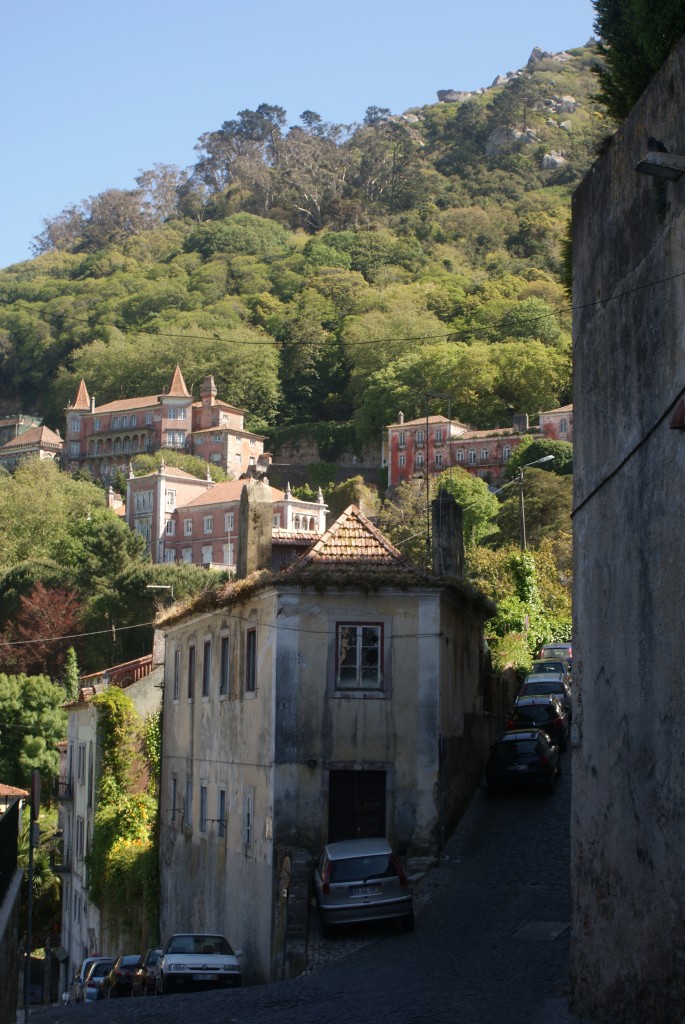Your sandals slide across the slick cobblestone. Navigating your way slowly uphill through narrow streets cast in mid-day shadows, you take in the sounds. From somewhere in the distance jazz music floats in the air, ethereal church bells trill, there is laughter.
Above, a piercing strip of blue cloudless sky. Flowers dangle from wrought iron balconies. Blue, white and yellow ceramic tile create an ornate and charming facade. You brush your fingers along the cool and surprisingly, not so smooth porcelain and smile- you've arrived.
With a name inspired by the Greek Goddess of the moon (usually pronounced Cynthia), Sintra, Portugal's second most populous municipality, with its high elevation in the mountains, seems the perfect monument to its namesake.
From your first moment there, breathing the crisp mountain air, taking in the stunning panoramic ocean views, it's clear that Sintra is a very special place.
Lush, green, vibrant and beautiful, Sintra was the summer home to Portugal's Royal family from the 13th century to the end of their reign in the 1930s. Palaces, stand as reminders. Pena Palace, a 19th century castle, built for Queen Maria II looms in the distance. In the center of town, the National Palace still stands as a monument.
In addition to hosting royalty, Sintra has the distinction of being the capital of the Portuguese Romantic Movement. During the end of the 18th century, Portuguese and European artists flocked to Sintra to draw creative inspiration. Among these artists were English poet Lord Byron and the Danish master of fairy tales Hans Christian Andersen.
Modern day Sintra holds tight to its aristocratic, literary and artistic past. Declared a UNESCO World Heritage Site in 1995, one could get lost admiring the Moorish architecture and rich history. Wandering along narrow cobblestone paths, you'll find art galleries, ceramics studios, cafes, restaurants and wine bars.
If you're lucky, you'll be able to catch the Feira de Sao Pedro, a large market which occurs twice a month bringing together local artists, farmers and vendors. If you do happen to make the market, be sure to sample a queijada, a small cheese and cinnamon pastry torte, they're a tasty specialty in Sintra.
Sintra is a quick day trip from Lisbon. About 90 minutes by bus, it is well worth the visit.








